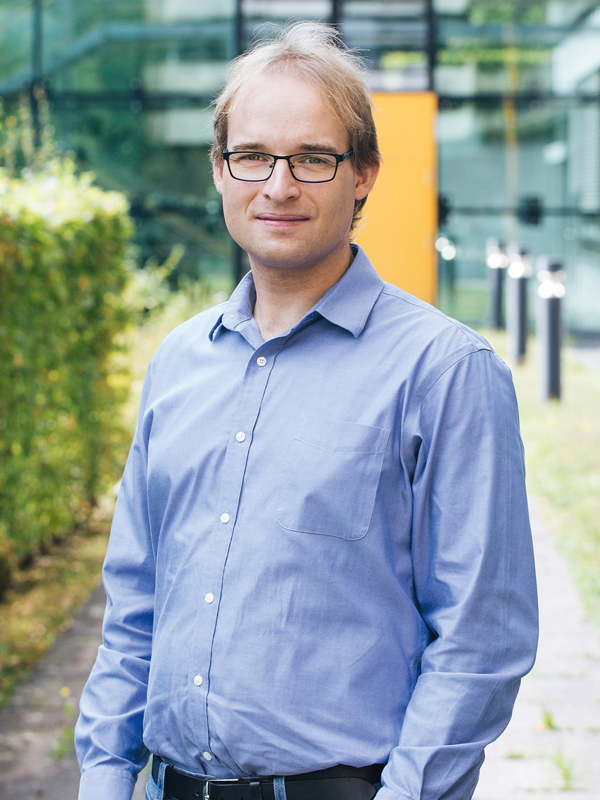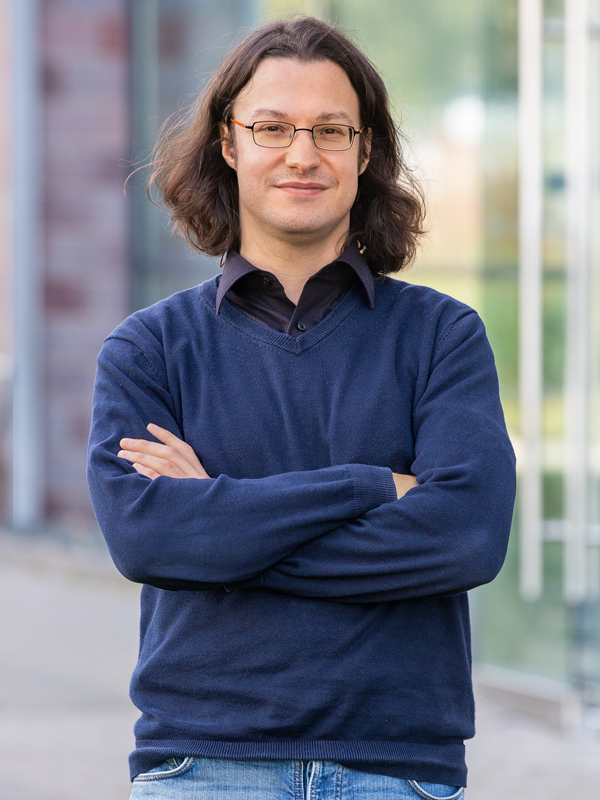“We Do Not Want to be Presented with the Finished Solution” – AI research and IAV
Knowledge transfer and joint research belongs together for IAV. Dr. Matthias Neumann-Brosig works at IAV in the Research Data Science department. Sebastian Trimpe is Professor of Data Science in Mechanical Engineering at RWTH Aachen University and Research Group Leader at the Max Planck Institute for Intelligent Systems. The two met in Cyber Valley and have been working together for years. In the automotion interview, they talk about the challenges and potential of collaboration – and why this leads to faster results.

What are the advantages of such collaboration?
Trimpe: At the interface of control engineering and AI, there is great potential through new sensor and data technologies and the resulting availability of data. In particular, approaches that combine data with classical control engineering are very promising. This is where we start with basic research. We develop new methods and algorithms and want to implement them in specific applications – often together with industrial partners.
Neumann-Brosig: As an industrial partner, we don’t want to be presented with the finished solution, but rather know how it is created. In this way, we sharpen our methodological competence, because it is a central competitive advantage. This is why IAV has also become involved as a founding partner in Cyber Valley, Europe’s largest AI research consortium. Sebastian Trimpe is active there through his research group at the Max Planck Institute. We also work very closely with the German Research Center for Artificial Intelligence in Kaiserslautern. In early 2018, we founded a joint research laboratory for this purpose.

«Research networks help to keep up with the pace. If we can move quickly here and find new, more open forms of collaboration, this can become a locational advantage.»
— Heads the Institute for Data Science in Mechanical Engineering at the RWTH Aachen and is research group leader at the Max Planck Institute for Intelligent Systems
In which fields is cooperation particularly useful?
Trimpe: For example, in the area of safety. It poses special challenges for Machine Learning. AI success stories in which a computer wins against a human in complex games like chess are impressive. But they cannot simply be transferred to technical or physical systems because of the safety requirements. The computer, which learns to play chess, can easily try out any behavior a million times over. In the worst case, it loses. A robot or a vehicle, on the other hand, can cause damage to itself or others and cannot keep hitting walls. And in contrast to chess, the conditions in the real world change constantly. Therefore fundamental research questions must be solved, so that we can apply AI to robots, technical systems or cars in a way that it works safely. And we also have to ask how to stimulate the systems in a way that we get meaningful data, while at the same time operating safely.
What does collaboration offer in terms of this challenge?
Trimpe: It enables a fast transfer. With the throttle valve, less than a year and a half passed from the initial idea to implementation. We can only achieve this speed, which is so important in AI, if we combine basic research directly with applications. I am glad that in our collaboration with IAV it was understood from the outset that although we do basic research, we can accelerate its transfer to practice if we combine it with applied research.
Neumann-Brosig: IAV emerged from a university spin-off; for us, it is part of our DNA to maintain the close link between science and research. In the field of AI, we are networked with the world’s leading institutes and universities. This keeps us close to the latest research findings. At the same time, our series competence makes us a strong partner who can bring research into industrial applications. This benefits both sides and we all profit from the fact that knowledge transfer is not a one-way street.

«When different approaches and points of view come together, this can be very fruitful for the project and can give rise to completely new approaches.»
— Specialist at IAV in the Data Science Research Division
How important are such collaborations for Germany as a business location?
Trimpe: Finding answers to the research questions associated with engineering applications of AI offers huge potential for companies in Germany and Europe. Research networks help to keep up with the pace. If we can move quickly here and find new, more open forms of collaboration, this can become a locational advantage.
What requirements do partners have to meet for this cooperation?
Trimpe: Openness and understanding for basic research. Plus the ability to get involved with each other, an interest in applications and the willingness to deal with the uncertainty that is part of research.
And what challenges does it pose?
Neumann-Brosig: An important and at the same time very exciting challenge is to bring the different worlds together. Depending on the project, representatives of different disciplines come together – for example, control engineers, computer scientists and statisticians. Sometimes it is an art to find a common language. At the same time, however, there is also great potential here. When different approaches and perspectives come together, the project can be very fruitful and completely new approaches can emerge. For me personally, this is always an enriching and motivating experience.
How does IAV always find the best people for such demanding tasks?
Neumann-Brosig: For one thing, we work very closely with a large number of universities and research institutes on various projects. On the other hand, many students gain their first practical experience with us and then want to stay. What’s more, some of our employees later return to the universities as doctoral students or professors and advertise for us. As a result, IAV has been extremely closely networked with research for many years now and is well established as a top address for researchers and developers.
The article was published in automotion 03/2020, the automotive engineering magazine of IAV. Here you can order the automotion free of charge.
